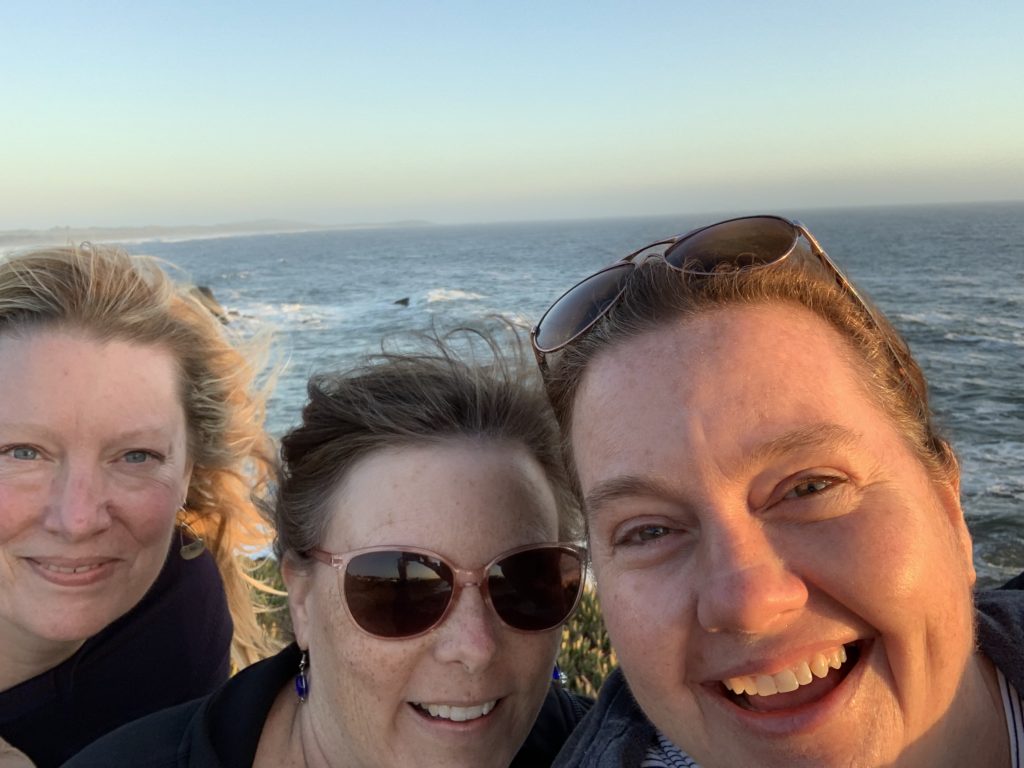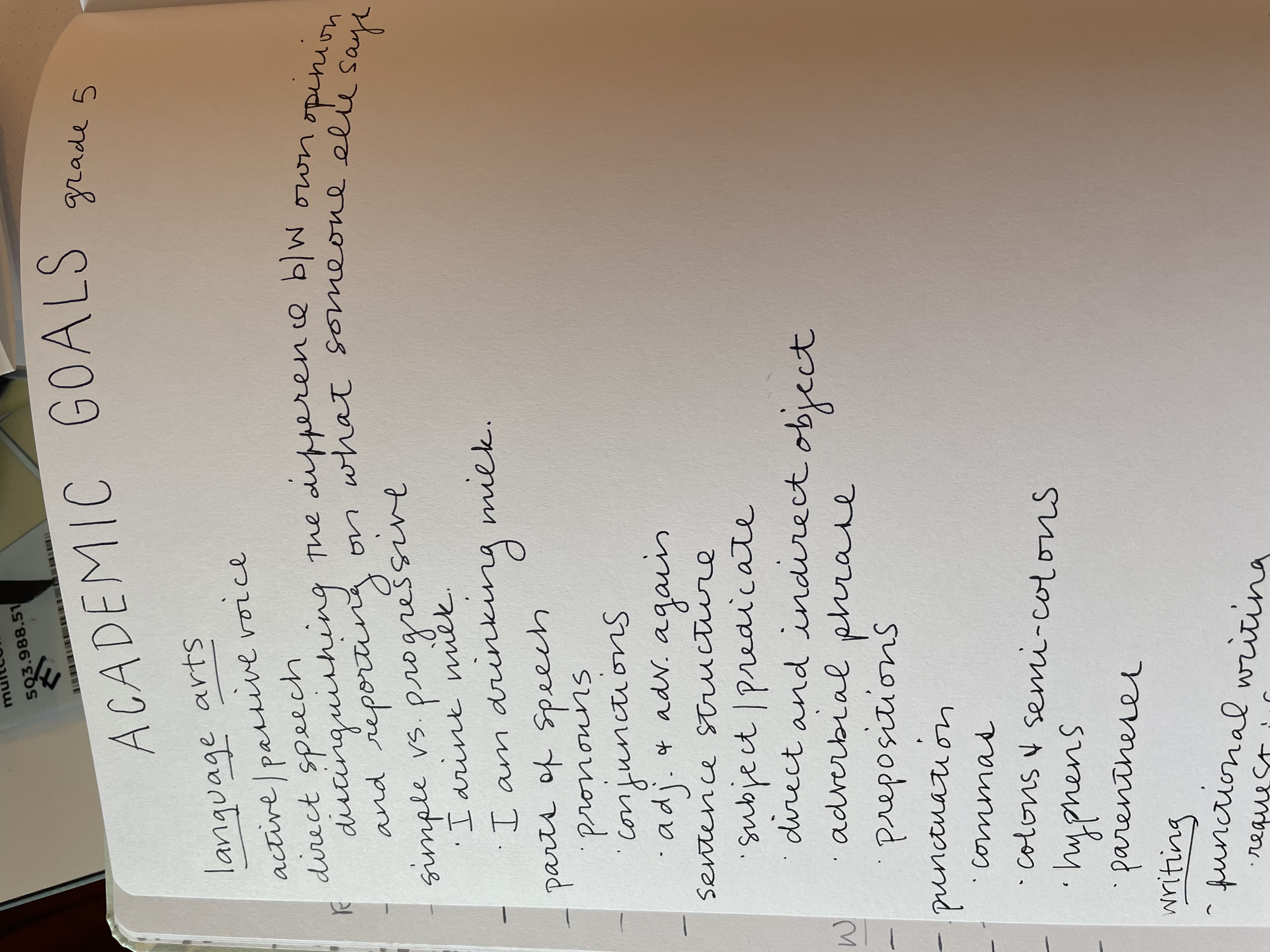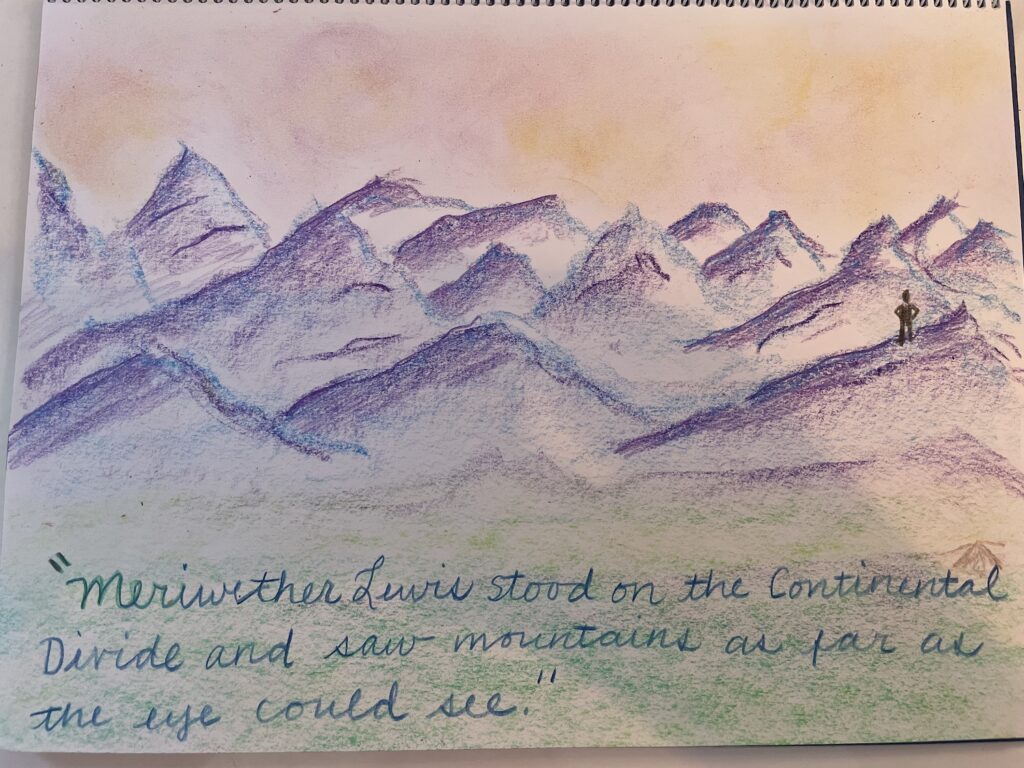This year I once again had the good fortune to teach at the summer training program at the Micha-el Institute. There are a few teachers who have been doing their summer prep at Micha-el for a number of years now, so it’s been nice to get to know them and check in every summer.
This year, it wasn’t looking like I was going to teach, but due to a last-minute staffing change, I got slotted in to teach mostly geography classes in the upper grades.

Now, ordinarily, geography would not be my first choice of topics to teach summer training teachers. Here’s why.
Teaching geography is complicated.
First, Steiner gave decent indications about geography for fourth grade, but there’s not much for the rest of the grades (other than the statement that geography is the “most important subject”).
Everyone is just figuring it out.
Second, because there is so little to go on, teachers are left to figure it out, and there isn’t general consensus among Waldorf curriculum developers (i.e., teachers) about what should be done in the different grades. This means that if I prepare to talk to seventh-grade teachers about teaching Asian Geography that year, there’s a chance someone will have already done it in sixth grade. What you do each year is highly dependent on what you did the previous year and what you’re going to do next year. So, my message to the poor sixth-grade teachers was to decide now what you’re going to cover in 6th, 7th, and 8th grade. I tried giving them a crash course in 6th-8th grade child development to guide their decision-making, but it’s definitely not ideal.
Teaching geography has changed.
Back when I first started teaching, we quite naturally taught the geography of Africa in connection with our study of the Age of Exploration, calling it “economy of soul”. The very idea of teaching this rich culture through the lens of colonialism is inconceivable to me now. I can’t just pull out those notes and recommend that teachers take that approach. And anyway. . .
My notes are sketchy.
Here’s the thing. Geography is a big outbreath subject, so it’s best taught at the ends of the year—either fall or spring. Almost always, I taught geography in the spring, often as the last block of the year. And you know I try to be diligent about my lesson planning and record-keeping, but spring has its way with the best of us.

Spring is a time when lessons get bumped for plays, field trips, assemblies, and so many other things. And despite my best efforts, often those geography blocks were not my best examples of imaginative, content-rich curricula.
There. I said it.
So, all this to say, though I was excited to talk to teachers about geography, I knew it was going to be work! In the end, the extra prep time was worth it, the classes went great, and I’m happy to share some of what we explored with you.
And I’ll say right off what I told every class I taught this year—geography is a high-prep subject. You don’t get to open the book of Norse Myths and start telling stories. And there’s no linear progression to follow (like with history). In fact, one of the things we talked about was making an effort to remove the geography block from history. Of course, trying to tell stories that transcend time is an exercise in frustration, so ultimately, my best recommendation was to bounce around through history. Tell indigenous and early settler stories from long ago AND from the modern day.
So, to get us ready for that work, here’s a quick peek at what we DO know.
Waldorf Fourth Grade Geography
Rumor has it that this is the grade that Steiner gave the most information about. And it’s true, in my experience, there is some general consensus about what should be taught in fourth-grade geography. The challenge, of course, is that it’s local geography, so still, every teacher is creating content about their local area. So even the fourth-grade teachers aren’t off the hook from doing the big work.
Fourth grade is the year when you start as close to the student as possible and then move out in expanding concentric circles. So, starting with the desk, the classroom, the school, the route from home to school, and eventually covering the town/city and state. There’s a big map-making component to this block that is suddenly age-appropriate for the shifted gaze of the fourth grader. Whereas previously, they were only able to view the world through their own perspective, the fourth grader can now shift and comprehend the bird’s eye view.

Throughout the block, you tell stories that are meaningful for your area, through both an indigenous and early settler lens. Tell stories from various times throughout history, without pigeonholing the indigenous perspective as “historical.”
I happened to start our fourth-grade year with this block, so I’ve got great notes, and I even put together a curriculum guide. It’s, of course, local to my area (Portland, OR), so I offer it at a pretty steep discount. It might give you an idea of what you can put together for your own area.
Waldorf Fifth Grade Geography
This year continues the expanding circles of fourth grade to include the home continent. We don’t, however, need to limit ourselves to the rigid structure of expanding circles. Basically, at the beginning of the first block, give an overview of the continent, and then explore various regions in a way that makes sense to you.

Steiner’s indications for fifth grade include:
- The relationship between the land and the economy, and how they were shaped by each other.
- Artificial rivers, dams, and canals
That’s it. The rest you get to figure out.
And though I’ve talked a lot about trying to separate geography from history, fifth grade is one place where we can take inspiration from the history curriculum to form our content. Fifth-grade history, which studies human evolution through the cultural epochs of India, Persia, Mesopotamia, Egypt, and Greece, tells the story of how human beings gradually made the earth their home. This seems in keeping with Steiner’s indications for geography above.
So, after giving an overview of the continent (I love to use the story of Paul Bunyan for this), go through the different regions telling stories about how people lived on the land, creating different kinds of maps, and observing climate patterns along the way.
I’ve got a (pretty great, if I do say so myself) North American Geography Curriculum Guide that breaks down how I taught it one year, including great instructions for guiding your students through a state report. But here are a few ideas of stories, just to get your wheels turning.
- The Erie Canal
- Tall Tales and Legends (Old Stormalong)
- The Hudson Bay Beaver Trade
- The Iroquois League
- Steamboats on the Mississippi
- National Parks (great tie in with Botany!)
- The California Gold Rush
By the way, this is a great time to connect with those teachers you meet at summer conferences. Find out what they taught for local geography in fourth grade, and bring those lessons into your regional explorations in fifth grade.
Okay, with fourth and fifth grade outlined a bit, we can start thinking about sixth through eighth. I’m really excited about what we came up with as an approach for these grades, but I’ll cover all that in another post.




Hi Meridith, so good to hear your 5th grade Geography story.
I was teaching 5th gr teacher in Denver.
Just looking at your list looks like were on the same page.I had a week to do all of 5th grade, and managed a full mormomg 3.5 hours for Geography.
The teacher drew wonderful maps of N America and central.
Love your blogs. Thank you for all you do.
Thesa Callinicos
Gradalis, Denver CO..
Hi Meridith. I’m a home-school Waldorf teacher from South Africa. Do you have any suggestions on how to teach South African geography? Or how to teach Geography to one child in a home-school setting?
Many thanks!
Alexandra Frankel
In fifth you also do India. Sixth is South America, often done by the language teacher, if they are teaching Spanish (could be Japan or China, if those are your foreign languages. Seventh is Africa & the Middle East bc of the travel that was going on. Eighth could also be China if you tie it in with Economic Geography and the tea trade. Remember economy of teaching, things are often double booked!
Thanks for this. At my school, in 5th grade, we covered India in the ancient civilizations block, but not from a geographical perspective. I wrote another post about geography in 6-8, and I really advocate for a different approach to those grades. I like to do physical geography in 6th, cultural geography in 7th, and economic geography in 8th, rather than choosing a continent. This feels like a more developmental approach, as those topics are so appropriate to those ages. I think within that you can choose any country, just approach it through that lens. I did an overview of the globe (latitude/long, time zones, oceans) and Antarctica in 6th, Africa in 7th, and Asia (and others) in 8th.